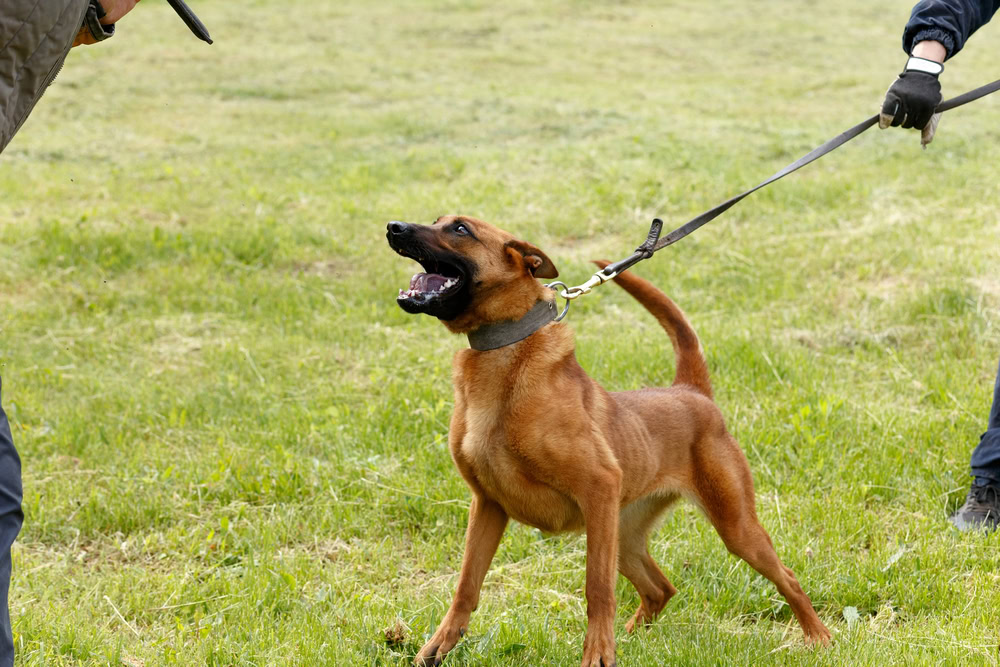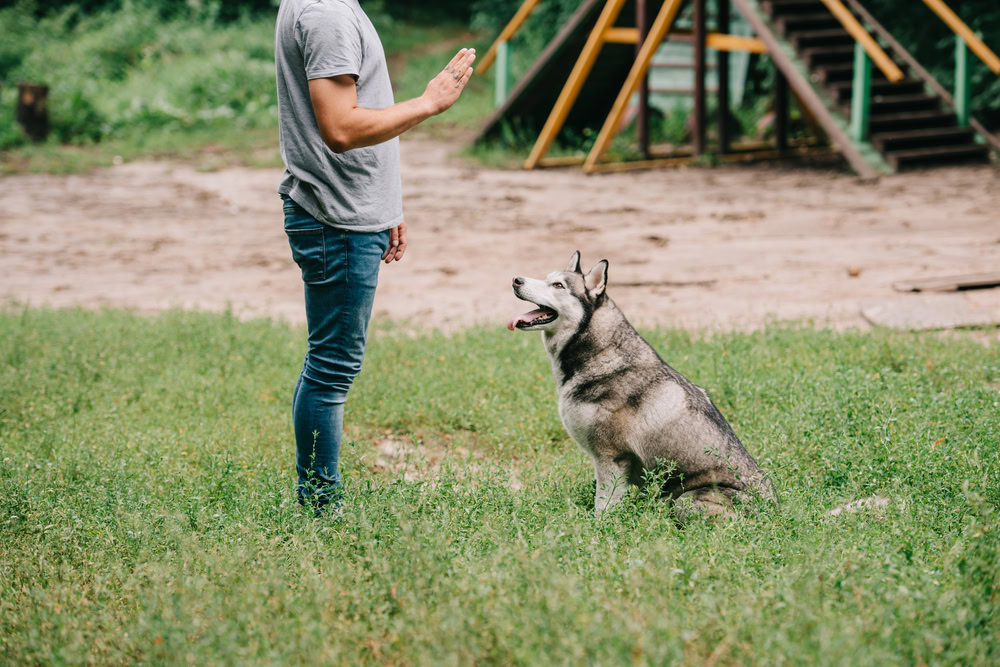Dealing with aggression in dogs can be one of the most challenging and heartbreaking situations pet owners face. Whether your dog shows aggression toward strangers, other animals, or even family members, understanding the underlying causes and implementing effective training techniques can make a tremendous difference in your dog's behavior and your peace of mind.

Consulting a Professional for an Initial Assessment
Working with a Veterinarian
Before addressing any aggressive behavior, consult with your veterinarian. Many types of aggression have medical roots that need to be addressed:
- Pain from injuries or conditions like arthritis can cause dogs to snap when touched
- Neurological issues may trigger sudden aggressive responses
- Thyroid imbalances can cause mood changes and increased reactivity
- Vision or hearing loss may cause a dog to become startled easily and react defensively
Ask your vet to perform a thorough examination and appropriate tests to rule out medical causes for your dog's aggression.
Finding a Qualified Dog Trainer or Behaviorist
Once medical issues are ruled out, working with a qualified dog training professional is crucial. When selecting a dog trainer or behaviorist:
- Look for certifications and relevant experience specifically with aggressive dogs
- Ask about their training philosophy and methods
- Request references from clients with similar issues
- Ensure they create individualized training plans rather than one-size-fits-all approaches
- Verify they're willing to collaborate with your veterinarian if needed
A good dog behavior professional will first assess what type of aggression your dog displays (fear-based, territorial, resource guarding, etc.) as each requires a different approach.
Establishing Safety and Management
Essential Safety Measures
Before beginning any training program, establish these safety protocols:
- Create a "safe room" where your dog can be comfortably contained when necessary
- Use baby gates to manage movement through your home
- Establish a routine for walks during quieter times to minimize stressful encounters
- Learn your dog's specific warning signs—raised hackles, stiffened body, whale eye (showing whites), or freezing—that precede an aggressive response
- Have an emergency plan for unexpected situations
Management Tools for Aggressive Dogs
Proper equipment is essential when working with an aggressive dog:
- Basket muzzles allow drinking, panting and treating while preventing bites
- Use a head halters or whatever training tool that allows you to provide better control on walks than standard collars
- Properly fitted martingale collars prevent escape for dogs that might back out of regular collars
- Long-lines (15-30 foot training leads) allow practice with distance while maintaining control
- Window film or barriers can prevent territorial reactions to outdoor stimuli
Remember that training tools are not solutions by themselves but create a safe environment for training to work.
Foundational Training Techniques
Build a foundation of trust and communication through training:
- Identify high-value rewards your dog truly values (special treats, toys, or attention)
- Teach and reinforce basic obedience that can redirect your dog's attention
- Practice "Look at me" or "Watch" commands to establish attention during distractions
- Establish structures and reinforce them.
- Correct when they display inappropriate behavior and reward calm behavior.
A solid training foundation gives your dog alternative behaviors to use instead of aggression and builds your communication system.
Behavior Modification Methods
Counterconditioning Techniques
Counterconditioning changes your dog's emotional response to triggers:
- Identify triggers that cause your dog to become aggressive
- Create controlled exposures to these triggers at a low intensity
- Be ready to correct inappropriate behavior and reward correct behavior
- Pair each exposure with something your dog loves (high-value treats, play)
- Repeat until your dog's emotional response changes from negative to positive
Teach, Desensitization and Habituation
Teach the dog the desired behavior and then desensitization involves gradual exposure to triggers at an intensity that doesn't provoke aggression: If the undesired behavior appears correct and praise the desired behavior.
- Create a hierarchy of triggers from least to most challenging
- Begin with the easiest version (greatest distance, shortest duration, lowest intensity)
- Progress in tiny increments—success builds on success
- Never rush the process—moving too quickly can cause setbacks
For example, for a dog aggressive toward strangers:
- Start with having a helper standing 50 feet away, not looking at the dog
- Gradually decrease distance as the dog remains calm
- Slowly add movement, eye contact, and speaking
- Eventually progress to controlled interactions
Addressing Specific Aggression Triggers Through Training

Training for Food and Toy Aggression
Resource guarding requires systematic training:
- Teach "Leave it" and "Drop it" commands
- Practice trading up—offering something better than what the dog has
- Add value to your presence around resources by approaching and adding better treats
- Hand-feed meals to build positive associations with human presence during eating
- Practice approaching food bowls and adding high-value treats when your dog is calm
- Be ready to correct if the dog reacts and then back off to the last stage of desensitizing.
Progress slowly, never forcing confrontations that might trigger aggressive behavior.
Training Dogs Aggressive Over Territory or Space
For territorial aggression:
- Correct any barking or any other territorial reaction
- Call the dog to you or get them to watch you as you reward these positive behaviors
- Create positive associations with people approaching your property through counterconditioning
- Control access to windows, doors, and fences where your dog may practice territorial displays
- Teach a solid "Place" command where your dog goes to a designated spot and stays
- Establish clear boundaries about furniture access if that's a trigger
- Practice neutral greetings at the door with helpers of varying appearances
Managing Aggression Toward Visitors
Create a structured visitor protocol:
- Have your dog in a separate room or on leash before guests arrive
- Correct the dog if it is barking and reward when it is quiet
- Ask visitors to ignore your dog initially (no eye contact, touching, or talking to the dog)
- Without lookin have your visiter toss treat in the dogs direction
- Allow your dog to approach visitors on their own terms
- Reward calm behavior around visitors generously
- Teach an alternative behavior like going to a mat when the doorbell rings
Practice regularly with patient helpers who will follow your instructions precisely.
Reducing Aggression Toward Other Dogs and Pets
Dog-to-dog aggression requires careful management:
- It is important to teach the dog to walk on a loose leash and that it knows the “watch” command
- Make sure the dog learns to ignore another dog first and reward when it does.
- Use parallel walking with a calm dog helper before face-to-face interactions
- Create controlled play sessions with compatible dogs
- Never force interactions—allow your dog to set the pace
For multi-pet households, use careful management, separate feeding areas, and supervised, structured interactions.
Advanced Training Considerations
Second-Order Reinforcement in Aggression Training
Understanding how aggression is maintained is crucial:
- Dogs often learn that aggressive displays make scary things go away
- This reinforces the aggressive behavior (it worked!)
- Breaking this cycle requires preventing the "success" of aggression
- Simultaneously, teach that calm behavior results in rewards and positive outcomes
This concept highlights why proper management is so important—it prevents your dog from practicing and being reinforced for aggressive behavior.
Medication as a Supplement to Training
For some dogs, behavioral medication may be necessary:
- Consult with a veterinary behaviorist about appropriate options
- Medication can reduce anxiety and reactivity, making your dog more receptive to training
- View medication as a tool to facilitate learning, not a solution by itself
- Some dogs may need short-term medication, while others might benefit from longer-term support
- Regular follow-ups with your veterinarian will help assess effectiveness and adjust as needed
Never start or stop behavioral medications without veterinary guidance.
Maintaining Progress and Preventing Setbacks
Consistency in Training
Long-term success requires consistency:
- Ensure all family members follow the same protocols
- Create written guidelines for handling specific situations
- Practice regularly, even after improvement is seen
- Gradually transition from controlled training scenarios to real-life situations
- Keep training sessions short but frequent
Remember that learning is not linear—expect occasional setbacks and don't let them discourage you.
Handling Unavoidable Situations Safely
Even with excellent training, challenging situations will arise:
- Always have your management tools available (muzzle, proper leash, etc.)
- Learn to read your dog's stress signals and intervene before aggression occurs
- Have an escape plan for unexpected encounters
- Don't hesitate to advocate for your dog—it's okay to ask people not to approach
- Set realistic expectations—some dogs may always need management in certain situations
Get Help Now
Transforming aggressive behavior requires patience, consistency, and the right approach. Remember that aggression is a symptom of an underlying problem—fear, anxiety, past trauma, lack of socialization, or confusion about expectations. With dedication to understanding your dog's needs and implementing appropriate training, many dogs can make remarkable progress.
If you're struggling with your dog's aggressive behavior, don't lose hope. Professional help from experienced trainers who specialize in aggression can make a tremendous difference. At Alternative Canine Training, we've been helping dogs overcome aggression since 2000 with methods that address the root causes of behavioral problems.
Remember, your dog isn't giving you a hard time—they're having a hard time. With compassion, consistency, and the right guidance, you can help your dog learn new ways to navigate the world without resorting to aggressive behavior.

